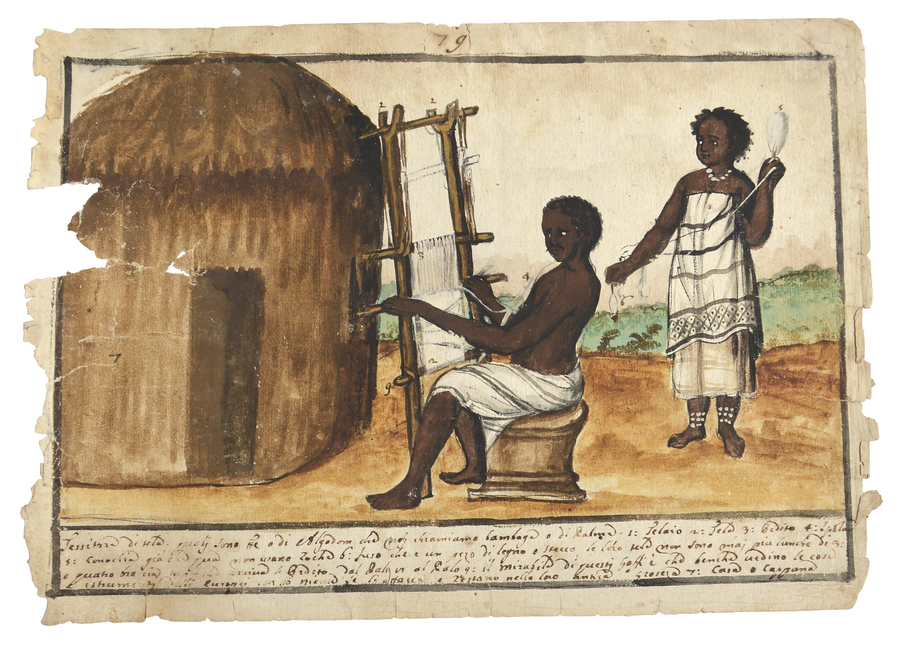PW079: Weaver of cloth
Tessitora di tela; queli sono t[u]tte o di Algodom1 che noi chiamiamo bambaga o di Palma. 1: Telaio 2: Tela 3: Ordito 4: Spola 5: Conochia gia che qua non usano roche 6: fuso che e un pezo de legno o sfecco; le loro tele non sono mai piu lunche di 3: o quatro bracia [. . .] arriva l’Ordito dal Palo 8 al Palo 9: il mirabile di questi goffi é che benche vedino le cose e istrumenti delli Europei con t[u]tto niente se li attacca e restano nella loro antica groseza 7: casa o cappana
Weaver of cloth; these are all either of Algodom which we call cotton or of Palm. 1: Loom 2: Cloth 3: Warp 4: Shuttle 5: bundle of fiber since here they do not use distaffs 6: spindle which is a piece of wood or stick; their cloth are not longer than 3 or four bracia2 [. . .] the warp stretches from stick 8 to stick 9: what is remarkable with these uncouth [people] is that although they see the things and instruments of the Europeans overall nothing sticks with them and they remain in their old roughness 7: house or cabin
- 1From the Portuguese, algodão: cotton [Gossypium]. Cotton textile making in central Africa is mentioned in Antonio da Gaeta and Gioia, La maravigliosa conversione, 181. See also Dapper, Naukeurige beschrijvinge, 523; 72. For cotton in Loango see Samuel Braun, Samuel Brun, des Wundartzet und Burgers zu Basel, Schiffarten: welche er in etliche newe Länder und Insulen, zu fünff underschiedlichen Malen, mit Gottes Hülff, gethan: an jetzo aber, auff Begeren vieler ehrlicher Leuthen, selbs beschrieben: und menniglichen, mit Kurtzweil und Nutz zu läsen, in Truck kommen lassen (Getruckt zu Basel: in Verlegung Johan Jacob Genaths, 1624), 29.
- 2Braccio, pl. braccia is a unit of length about 26 or 27 inches (66 or 68 cm).

Add new comment